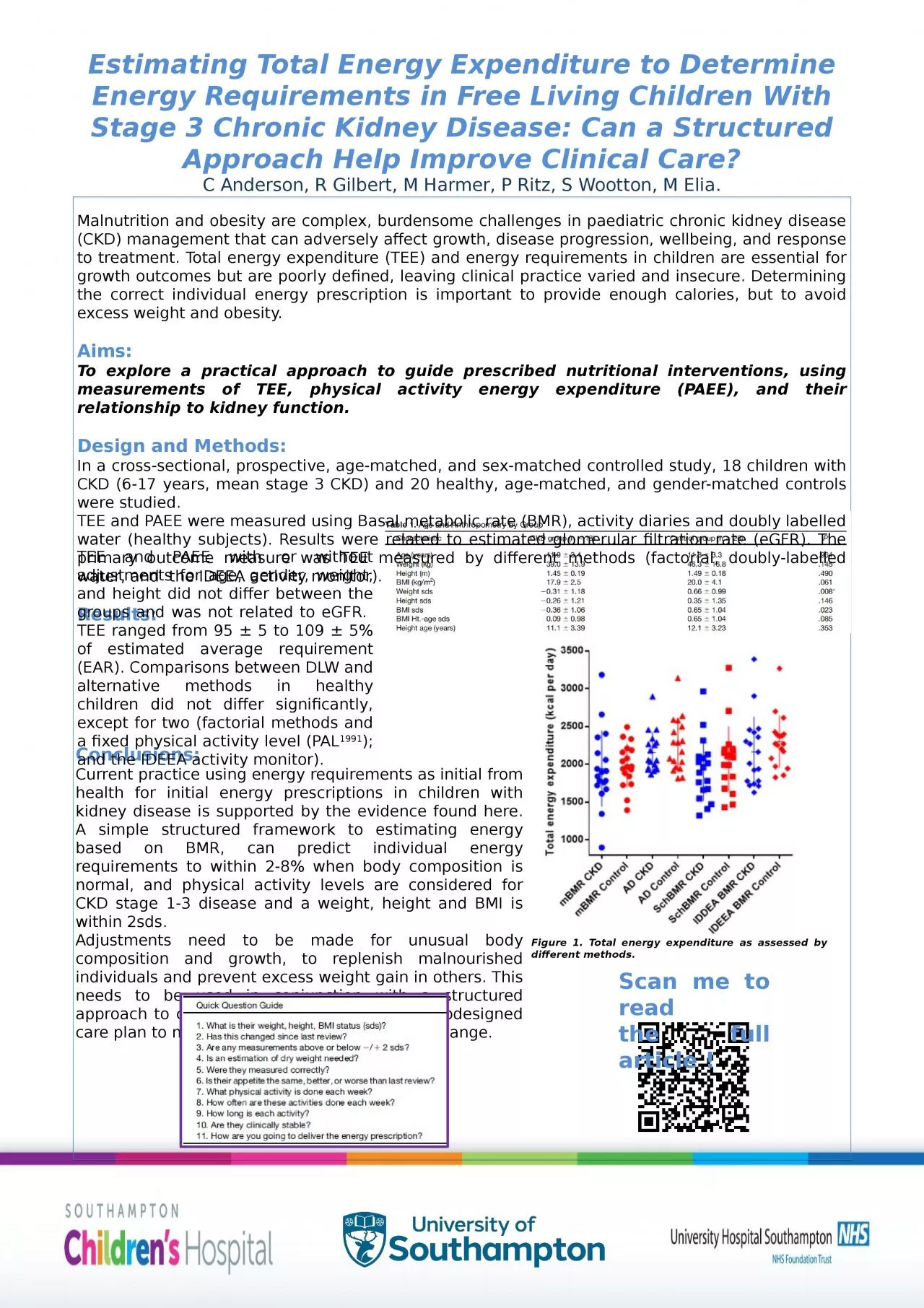

C Anderson R Gilbert M Harmer P Ritz S Wootton M Elia Malnutrition and obesity are complex burdensome challenges in paediatric chronic kidney disease CKD management that can adversely affect growth disease progression wellbeing and response to treatment Total energy expenditure TEE a ID: 1039600
Download Presentation The PPT/PDF document "Estimating Total Energy Expenditure to D..." is the property of its rightful owner. Permission is granted to download and print the materials on this web site for personal, non-commercial use only, and to display it on your personal computer provided you do not modify the materials and that you retain all copyright notices contained in the materials. By downloading content from our website, you accept the terms of this agreement.
1. Estimating Total Energy Expenditure to Determine Energy Requirements in Free Living Children With Stage 3 Chronic Kidney Disease: Can a Structured Approach Help Improve Clinical Care?C Anderson, R Gilbert, M Harmer, P Ritz, S Wootton, M Elia.Malnutrition and obesity are complex, burdensome challenges in paediatric chronic kidney disease (CKD) management that can adversely affect growth, disease progression, wellbeing, and response to treatment. Total energy expenditure (TEE) and energy requirements in children are essential for growth outcomes but are poorly defined, leaving clinical practice varied and insecure. Determining the correct individual energy prescription is important to provide enough calories, but to avoid excess weight and obesity.Aims: To explore a practical approach to guide prescribed nutritional interventions, using measurements of TEE, physical activity energy expenditure (PAEE), and their relationship to kidney function.Design and Methods: In a cross-sectional, prospective, age-matched, and sex-matched controlled study, 18 children with CKD (6-17 years, mean stage 3 CKD) and 20 healthy, age-matched, and gender-matched controls were studied.TEE and PAEE were measured using Basal metabolic rate (BMR), activity diaries and doubly labelled water (healthy subjects). Results were related to estimated glomerular filtration rate (eGFR). The primary outcome measure was TEE measured by different methods (factorial, doubly-labelled water, and the IDEEA activity monitor).Results: Conclusions:Current practice using energy requirements as initial from health for initial energy prescriptions in children with kidney disease is supported by the evidence found here. A simple structured framework to estimating energy based on BMR, can predict individual energy requirements to within 2-8% when body composition is normal, and physical activity levels are considered for CKD stage 1-3 disease and a weight, height and BMI is within 2sds. Adjustments need to be made for unusual body composition and growth, to replenish malnourished individuals and prevent excess weight gain in others. This needs to be used in conjunction with a structured approach to care and clearly communicated, codesigned care plan to monitor the type and direction of change.Scan me to read the full article !TEE and PAEE with or without adjustments for age, gender, weight, and height did not differ between the groups and was not related to eGFR. TEE ranged from 95 ± 5 to 109 ± 5% of estimated average requirement (EAR). Comparisons between DLW and alternative methods in healthy children did not differ significantly, except for two (factorial methods and a fixed physical activity level (PAL1991); and the IDEEA activity monitor).Figure 1. Total energy expenditure as assessed by different methods.